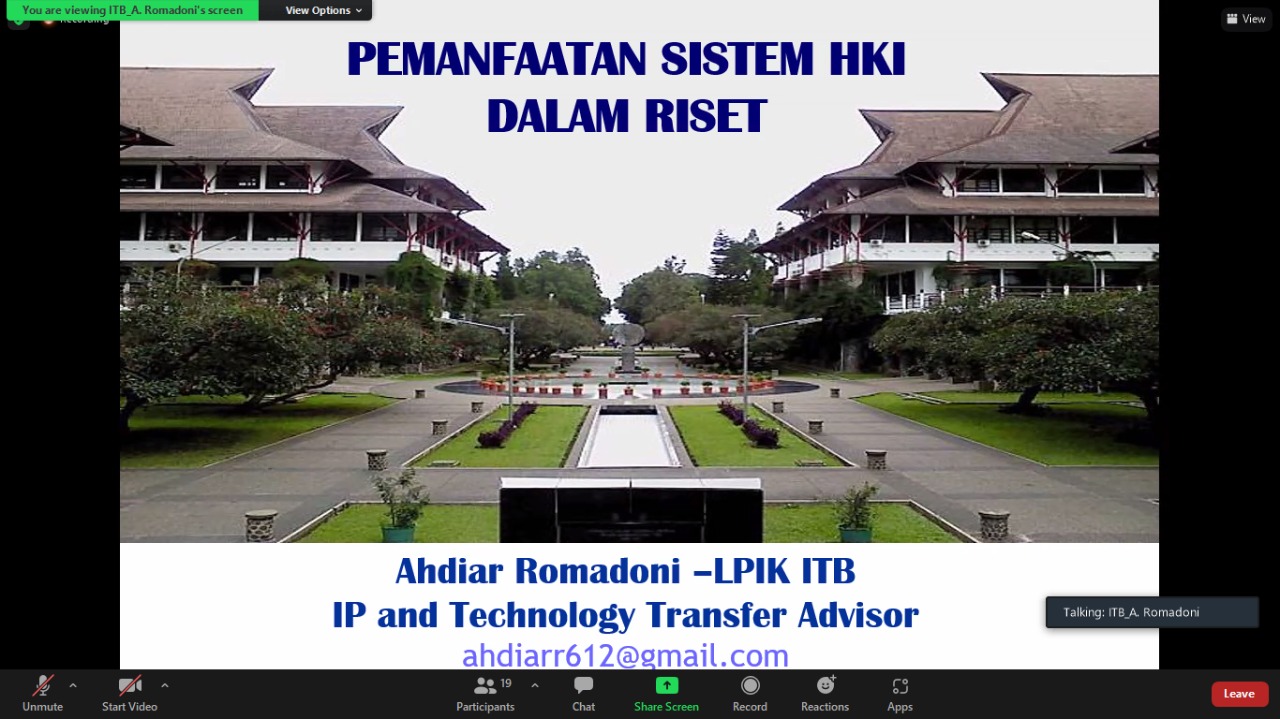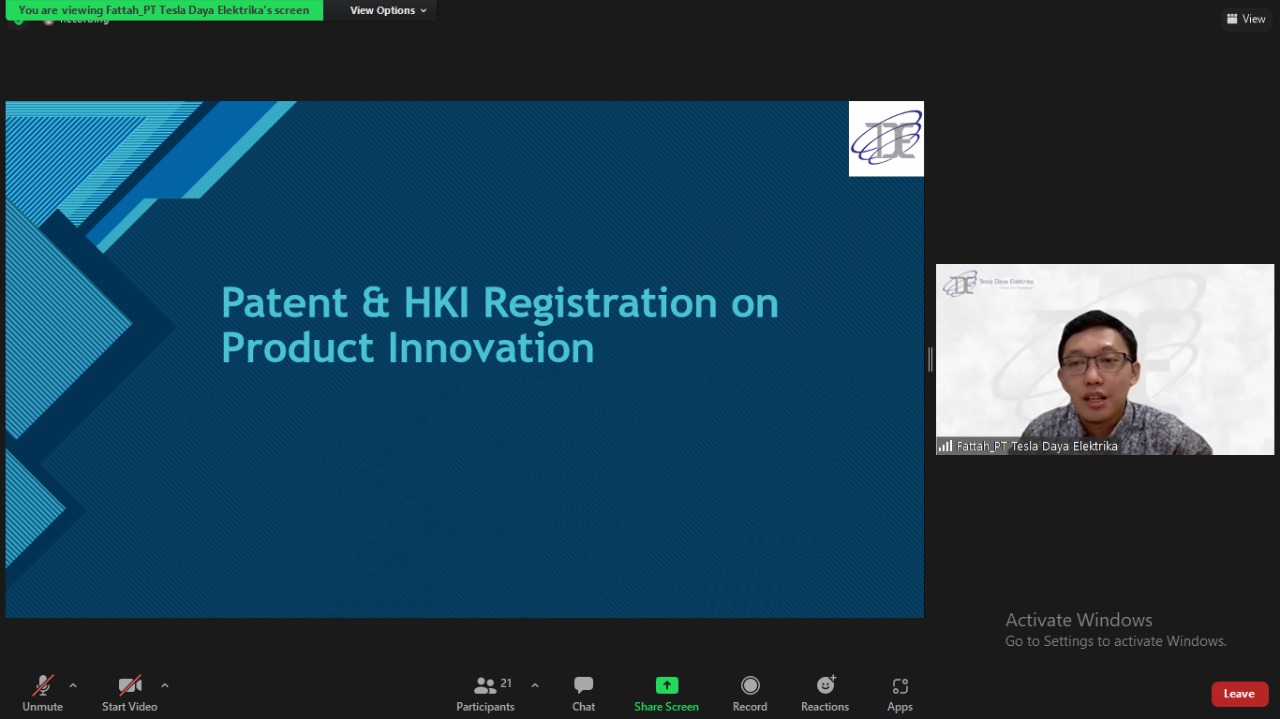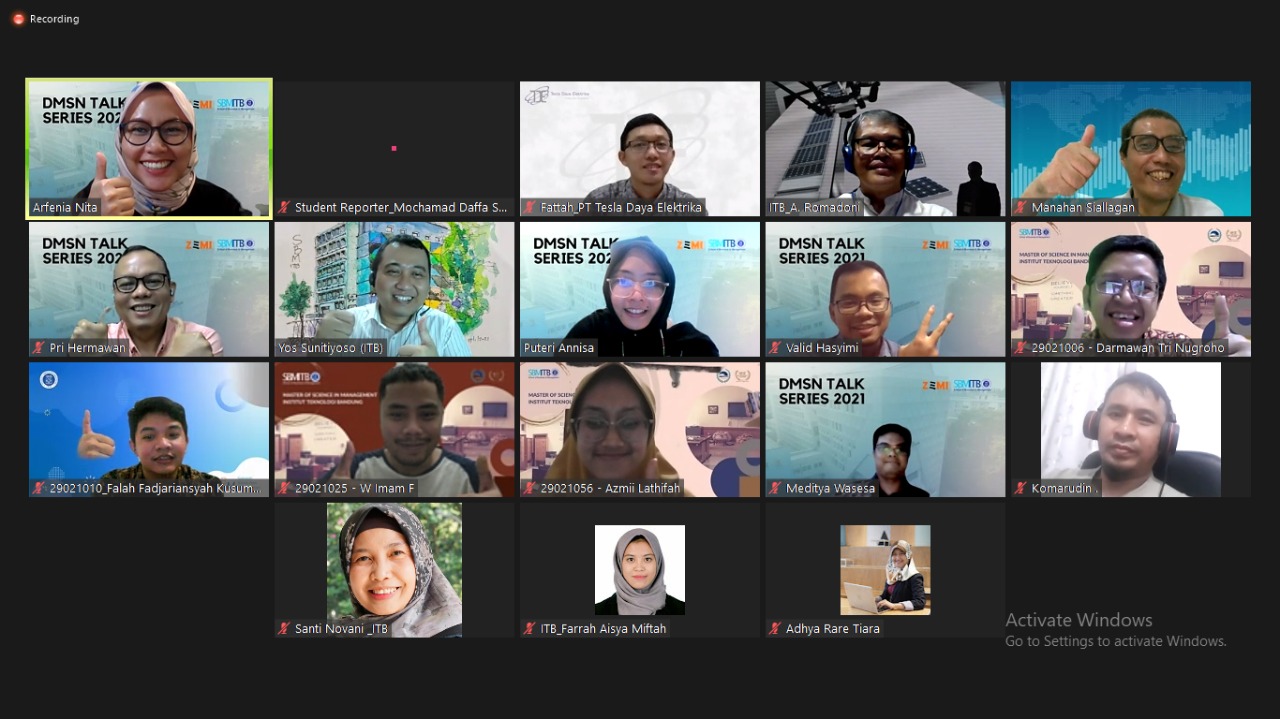In addition to publishing journals and conference proceedings, research dissemination can also be done by publishing Intellectual Property Rights (IP). However, many researchers do not understand how the issuance of IP is a form of dissemination and protection of their research results.

Ahdiar started the presentation by quoting the opinion of John Howkins from his book, The Creative Economy: How People Make Money From Ideas, stating, “IP is the basic currency of the creative economy. It is how people assert ownership, how they control the usage, and how they set price.”

Overall, there are two types of IP, namely copyright and industrial property rights. Copyright is the highest form of intellectual protection that includes the protection of science, writing, art, literature, and even computer programs. Meanwhile, industrial property rights protect inventions or research results of a technical-solution matter in the form of certain products or processes/methods. Industrial property rights cover patents, brands, industrial designs, computer integrated circuit layout designs, trade secrets, new varieties, and so on.
In particular, Ahdiar discussed one form of the patent in the business world, in the form of a business method patent which focuses on how a business entity runs or integrates business activities with technology. Business method patents can cover various fields in a company, such as logistics and transportation, order management, transaction methods, to product and customer management.
“The purpose of HKI is to stimulate the public to work and create,” said the Consultant at LPIK ITB.
He explained the background of IP in its context as an incentive for people to innovate, which is closely related to the impact of globalization, namely the existence of markets and free trade, tight business competition, and the behavior of imitating other people’s ideas. These problems encourage the emergence of a knowledge-based economy that prioritizes intellectual assets, research, and creative-based industries.
IP creates a new paradigm in business. “Whereas in the past business practice emphasized the control of resources for the production and sale of products, the IP paradigm business puts forward research and innovation protected by IP as a company’s competitive advantage and functions not only as legal protection,” said Ahdiar.
More than beneficial for monopoly commercialization, the use of IP is also carried out in the form of IP development joint venture, outsourcing, licensing, franchising, and IP assignment.
In the context of macroeconomics, this new paradigm encourages the emergence of additional views in seeing the success of a country by seeing how much the country has budgeted for research and development (RnD) purposes. In 2020, the People’s Republic of China, the United States, Japan, South Korea, and Germany became the countries that budgeted the largest funds for RnD purposes. Meanwhile, Indonesia has a relatively small percentage of research and development budget compared to its gross domestic product (GDP), with a percentage below Poland, Turkey, and even Egypt.
After listening to the general presentation of IP, the DMSN Talk Series continued with a presentation entitled “Patent and IP Registration on Product Innovation” by Muhammad Fattah Aziiz, Director of PT. Tesla Daya Elektrika, which explains one concrete example of the use of intellectual property rights for research dissemination.
Fattah explained how his company, which operates as a consultant and electrical contractor, has patented its various innovations since 2015. The innovation comes from the idea of Dr. Ir. Djoko Darwanto, an electrical engineer who is also a lecturer at the School of Electrical and Informatics Engineering (STEI) ITB. He observes that lightning strikes generally cause 30 percent of electrical problems. As a result, he initiated various lightning protection systems. Now, PT. Tesla Daya Elektrika has successfully owned four patents from their 5 product lines.
As closure, Fattah explained the various challenges researchers and businessmen face in making patents and intellectual property rights in general. These challenges include new product entry, challenges encountered in the RnD process, patenting and the certification, bargaining position with the market and acts of plagiarism.





